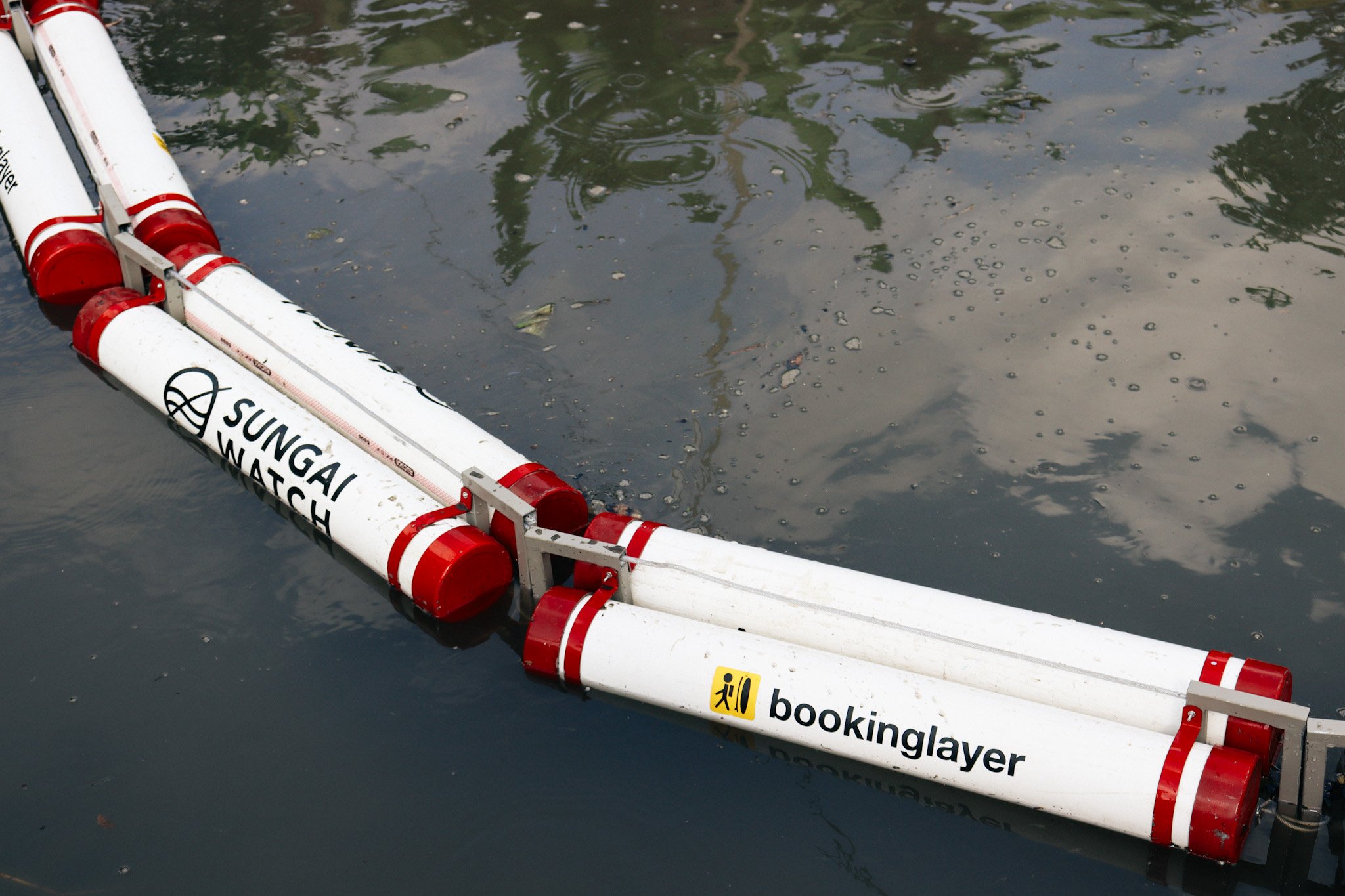Updated: 07 Jan 2025
Master the art of retreat planning with our comprehensive guide on how to host a retreat. From curating engaging programs to leveraging technology, we'll provide you with essential steps and expert tips to ensure a successful and memorable retreat experience.
Whether you're a seasoned retreat host or a first-time organizer, this guide will help make the process of hosting a retreat easier. We’ll also cover how using retreat booking software can help streamline your operations and enhance your guest experience. Let's dive in and start your journey to becoming a retreat planning pro.
What Is a Retreat?
A retreat is a focused event where individuals or groups come together to engage in activities that promote relaxation, reflection, and personal growth. It serves as a dedicated time and space for participants to disconnect from their routines, rejuvenate their minds and bodies, and cultivate new insights and experiences. Retreats offer a unique opportunity to escape the demands of daily life and explore personal development in a supportive and inspiring environment.
Booking software designed for retreat businesses.
The State of the Retreat Industry
As consumers continue to prioritize their personal health, the wellness tourism market continues to expand. In fact, one report published by Grand View Research predicts that wellness tourism will experience an annual growth rate of 12 percent from 2023 to 2030.
Further, Global Wellness Institute projects that the wellness tourism market will reach a whopping $1.1 trillion value in 2025. This report also points out that wellness travelers also spend significantly more money than non-wellness travelers, which is just one of the many reasons that hosting a retreat is a worthwhile venture.
The Top 12 Steps for Hosting a Retreat
Depending on the type of retreat you want to host, there are many different elements you’ll need to consider. However, whether you’re hosting a yoga retreat or an ayahuasca retreat, there are certain steps that every retreat owner should follow. If you want to learn how to host a retreat, follow the key steps below.
1. Define Your Retreat Goals and Theme
Start by defining clear retreat goals and a compelling theme that resonates with your target audience. Consider the purpose behind your retreat and the outcomes you want to achieve. This will inform all of the other decisions you need to make and provide a solid foundation for crafting a transformative and engaging experience.
2. Identify Your Target Audience and Ideal Location
Understanding your target audience's preferences, needs, and interests is extremely important when planning the content, structure, and marketing for your retreat. This knowledge will also help you choose the ideal location that aligns with the target audience’s desires and provides an inspiring backdrop for your retreat.
3. Plan a Well-Structured Retreat Itinerary
Craft a well-structured retreat itinerary that balances relaxation, learning, and meaningful activities. Outline the flow of each day, allowing ample time for both engaging activities and rest. While you want your guests to get value out of the sessions you facilitate, you also want them to leave feeling rejuvenated.
4. Create Engaging and Relevant Retreat Content
Develop compelling retreat content that connects with your participants on a deep level. Offer workshops, sessions, and experiences that cater to their interests, providing valuable insights, tools, and practices that they can integrate into their lives beyond the retreat. When creating your content, reflect back on your target audience and the overall goals of the retreat.
5. Organize Accommodation and Facilities
When hosting a retreat, the location is one of the most important considerations. Carefully select accommodations and facilities that align with the retreat's theme and create a comfortable and inviting atmosphere. Whether it's a cozy retreat center or a serene natural setting, ensure that the chosen space supports relaxation, rejuvenation, and connection.
6. Arrange Transportation and Logistics
Streamlining transportation and logistics makes the retreat experience seamless and hassle-free. Coordinate travel arrangements, transfers, and any necessary on-site transportation, allowing participants to focus on the retreat's essence without worrying about the practicalities. You can gather all of this information during the retreat booking process.
7. Cater to Dietary Restrictions and Special Needs
When hosting a retreat, it is essential to take the dietary restrictions and special needs of your participants into account. Offer a diverse menu that accommodates various dietary preferences and ensures that everyone feels nourished and cared for throughout the retreat. Again, gathering this information when your guests are booking the retreat will give you time to prepare accordingly and make adjustments as needed.
8. Set Budgets and Pricing
While hosting retreats may be a passion of yours, sustainable retreats also need to be sound financially. Establish clear budgets and pricing that align with the value you provide. Consider the costs involved, including accommodations, meals, activities, and facilitators. Strike a balance between offering an exceptional experience and maintaining financial sustainability.
9. Implement Effective Retreat Marketing Strategies
Craft a comprehensive marketing strategy to reach your target audience and generate interest in your retreat. Utilize various channels, such as social media, email marketing, and partnerships, to showcase the unique benefits and value participants will gain from attending. Hone in on your target audience and what will speak to them.
10. Start Gathering Retreat Bookings
Once you have laid the groundwork, it's time to start gathering retreat bookings. Leveraging a retreat booking system will streamline the registration and payment process, providing a convenient and user-friendly experience for your potential participants. Using a booking system can also help you eliminate booking errors, collect more information from guests, and upsell extra services and products.
Automate the entire retreat booking process with Bookinglayer.
11. Remember, It's in the Details
When you are navigating all the logistics of how to host a retreat, don’t forget the ultimate goal of providing a thoughtful experience for your guests. Pay attention to the finer details that make your retreat exceptional. From personalized welcome packages to thoughtful surprises, these little touches create a memorable and cherished experience, leaving a lasting impression on your participants.
12. Gather Feedback, Adjust, and Improve
After the retreat concludes, gather feedback from participants to gain valuable insights and identify areas for improvement. Take this feedback to heart, continuously refining and enhancing your retreat offerings to deliver even greater value in the future. While you can ask for feedback in person, sending out automated surveys after guests leave is a great, low-pressure way to gather insights.
Helpful Tools for Hosting a Retreat
 Using tools like a retreat booking system can make hosting a retreat much easier.
Using tools like a retreat booking system can make hosting a retreat much easier.
When you are hosting a retreat, there are countless things to coordinate. Leveraging helpful tools will simplify your tasks and give you more time to focus on guests, enhancing the participant experience. Here are three key tools that can significantly contribute to your success as a retreat owner:
Booking System. A reliable and efficient booking system is essential for managing retreat reservations seamlessly. Implementing a robust booking system, such as our advanced retreat booking software, simplifies the registration process, allows participants to easily select their preferred dates and accommodations, and facilitates secure online payments. With real-time availability updates and automated confirmation emails, our booking system ensures a smooth and hassle-free booking experience for both you and your attendees.
Internal Communications. If your retreat involves multiple facilitators or team members, effective internal communication is vital for a well-organized experience. Utilize collaboration and project management tools to streamline communication among your team members. Platforms like Slack or Microsoft Teams provide a centralized space for sharing updates, coordinating tasks, and fostering collaboration.
Feedback Forms. Implementing feedback forms allows you to gain valuable insights into attendees' experiences, satisfaction levels, and suggestions for enhancement. By leveraging our automated email templates, you can easily collect and analyze feedback, identifying areas of strength and areas that require refinement. This valuable feedback loop empowers you to make data-driven decisions, delivering even more impactful and fulfilling retreats in the future.
Hosting Retreats Is Easier With Bookinglayer
Bookinglayer is a powerful, all-in-one software designed specifically for businesses like retreats. With the ability to sell customizable packages, plan sessions, and gather the finer details from guests after they’ve made a booking, using Bookinglayer saves you time, heightens guest satisfaction, and increases revenue.
If you are hosting a retreat, schedule a free demo call to learn more about how Bookinglayer streamlines your operations so that you have more time to focus on providing an exceptional experience to your guests. Discover how you can use Advanced Features like Partner Login to collaborate with other retreat hosts to take your business to the next level.
How to Host a Retreat FAQ
What usually happens at a retreat?
Retreats usually consist of group sessions that center around learning and growth as well as individual time for reflection and recharging. Depending on the type of retreat, participants may attend workshops, physical activities, meditation sessions, and more. These programs also typically include meals and lodging.
How do I organize a retreat?
To organize a retreat, you need to plan out your location, content, menu, schedule, and more. When hosting a retreat, you will also need to consider the business side of things, such as gathering retreat bookings, processing payments, and collecting waivers for certain activities.
What is the goal of a retreat?
The goal of every retreat is different, but it usually revolves around fostering connection, growth, and reflection. Whether it is a yoga retreat or a medicinal retreat, participants often leave with new perspectives and a refined concept of their purpose.
Related articles

Supporting Cleaner Waters: Bookinglayer and Sungai Watch Collaboration
Through 1% for the Planet, Bookinglayer teamed up with Sungai Watch to install a new river barrier in Bali.

8 Key Ways to Make Booking a Retreat Easier for Guests
Boost conversions and improve your guest experience by making the retreat booking experience easier for everyone.

Bookinglayer Insights: Our 5 Most Popular Advanced Features
Bookinglayer's Advanced Features help take your guest services, operations, and online booking system to the next level. Discover our top features in this article.
Keep me in the loop
By subscribing to our newsletter you are notified about new product features.
